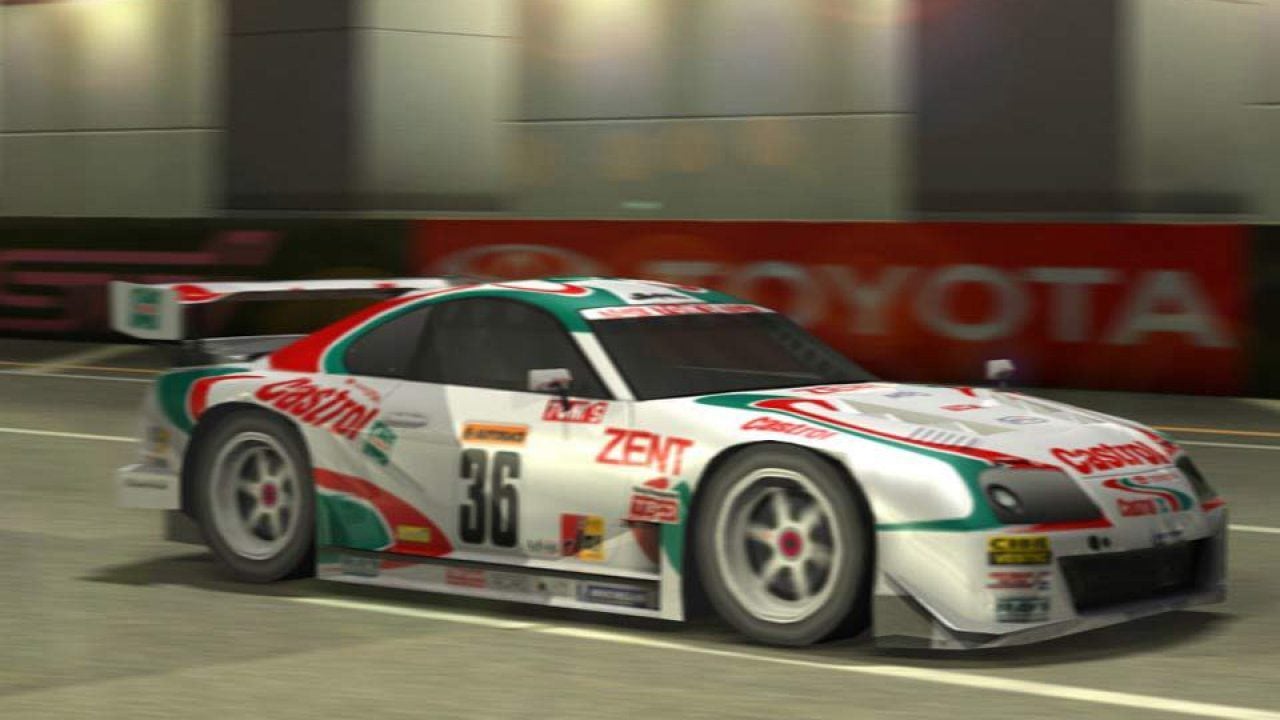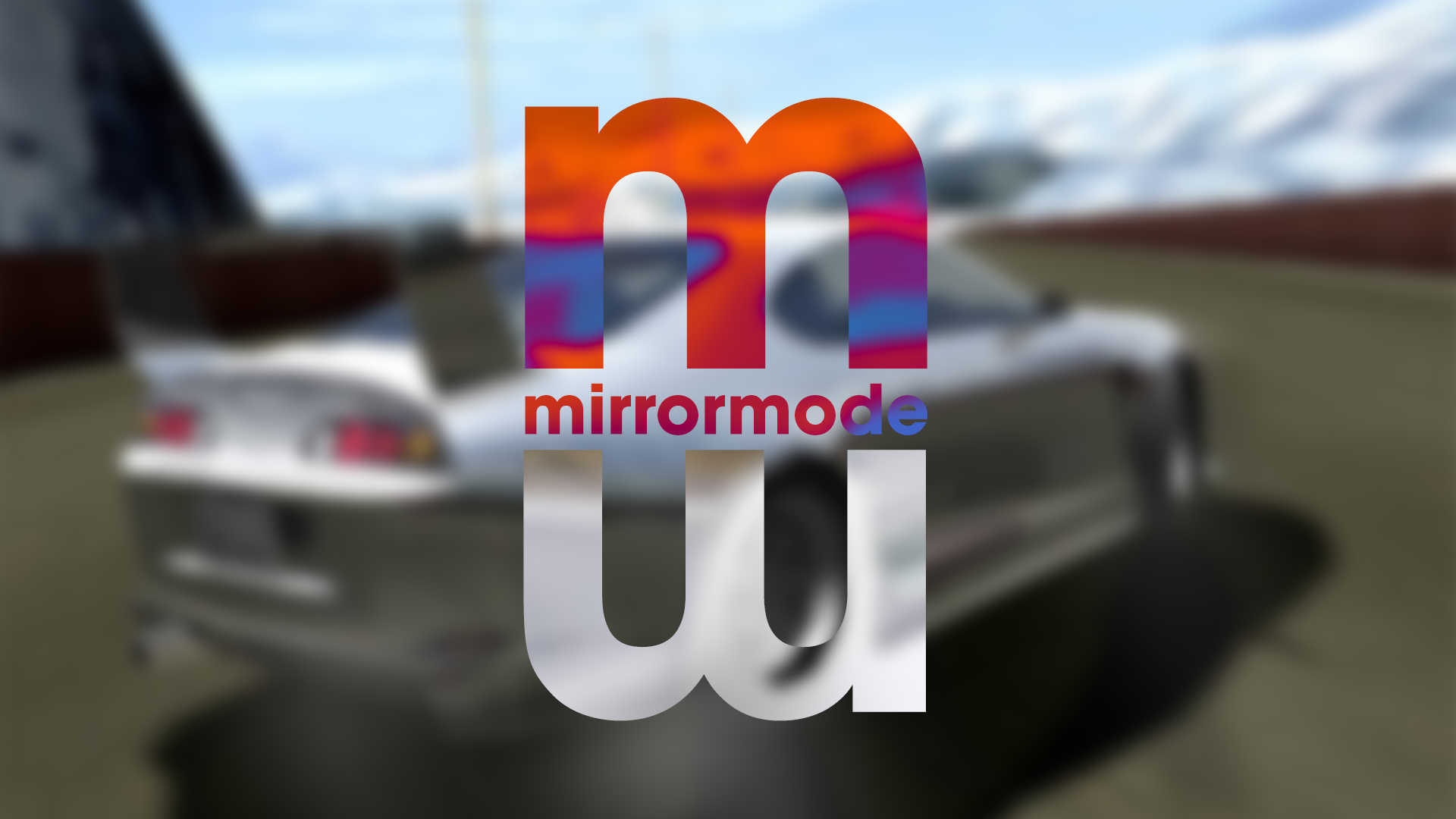Welcome to Mirror Mode, GTPlanet’s new series that shines a spotlight on retro racing games. For our first installment, we’re taking a look back at one of the competitors Gran Turismo inspired during the franchise’s early years: Sega GT.
Browsing the list of the PlayStation’s best-selling titles is sort of like cracking open your old high school yearbook — different parts charming, nostalgic, and even a little wistful. There are the usual suspects, the gaming mainstays that have maintained their relevance since the console’s launch over 20 years ago, like Final Fantasy, Resident Evil, and Metal Gear Solid. Then, like that kid who peaked on the football field and never quite found a way to transition into adulthood, there’s Crash Bandicoot and Spyro — platformers of a bygone era that may have cut it back then, but were left behind for bigger, better, and more violent things.
None of that is particularly surprising, save for the racing simulator at the top spot. Gran Turismo was the kind of game nobody knew the public really wanted, right up until the moment the public unequivocally demonstrated that it did. It cultivated a mainstream audience where previous developers and publishers saw only niche appeal. The first two games in the franchise combined to sell roughly 20 million units, good for first and third on the system’s best-selling list, respectively.
The thing is, you don’t get to that number without anyone noticing. And so, very quickly, just about everyone tried to rush out their gigantic, big budget racing game to cash in, as if it hadn’t taken Polyphony Digital about half a decade to nail its own. Some of them were good, but many weren’t.
Today, we more or less take these games for granted. Gran Turismo is no longer the sole innovator it once was, with Forza Motorsport, Project Cars, and Assetto Corsa having challenged and, in some respects, toppled the throne. But it wasn’t always this way. The road to what very well could be the best year in sim racing ever has been a bumpy one, littered with failed experiments and a few glimmers of progress. Sega GT is an example of both.
Wait, Sega Made A Gran Turismo?
Sega GT was in many ways a previous generation’s Forza, insofar as it was a highly-polished, big-budget racing simulator developed by Sony’s leading competitor in the console space to capitalize on a market dominated by the PlayStation. Released in 2000 on the Dreamcast, it was made by Wow Entertainment, Sega’s first-party studio responsible for The House of the Dead series. If that sounds like a peculiar origin for a sim racer, well, Sega GT was a peculiar game.
At first glance, it ticks all the right boxes. You’ve got roughly 130 cars at your disposal, though the true total differs depending on territory. The American and European versions, which debuted after the initial Japanese release, added domestic manufacturers. There are 12 tracks which run the gamut from dedicated circuits to street courses and even a drag strip, and way more events than you’d care to experience them in. Throw in the added graphical muscle of the Dreamcast itself along with some rudimentary network functionality (albeit no online multiplayer), and GT2 has certainly been given a run for its money, right? Not quite.
What It Got Right
In all honesty, Sega GT wasn’t very highly regarded at the time of its launch — let alone fondly remembered today — due to reasons we’ll explain in the next segment. But there was one thing it did particularly well that still sets it apart from the competition.
It was called the Carrozzeria, and it was a feature Sega heavily marketed ahead of the game’s release. Italian for “body shop,” the mode allowed players to build their own vehicles almost from scratch.
While there is no shortage of mobile games today boasting car creation, and a notable one on PC — Automation — with deeper and more granular options than anything that has come before, many of these titles don’t actually let you drive the vehicles you make. Sega GT did, and the act of building a car in the Carrozzeria struck the perfect balance between being simple and complex, and creative as well as strategic.
You’d begin by selecting the displacement of your car’s engine. Higher displacements are locked away behind career progression, so only 660cc and 1000cc are available at the start. Based on the size selected, you’re then offered a choice between several different engine types. As an example, a 1000cc mill can be either an inline-3 or inline-4, and the greater the displacement and number of cylinders, the more expensive it is to make.
Next, you take your pick of aspiration, engine placement, and drivetrain — all of which will impact the vehicle’s driving characteristics accordingly. Follow that up by selecting a body style, basic exterior details, color, and name, and the build is complete
Sega GT’s car creation suite is more advanced than just about any racing game in its class, and certainly any similar product of the era. Milestone’s Apex (Racing Evoluzione in Europe), which debuted on Xbox three years later, promised the ability to run your own manufacturer and build vehicles from the ground up, but gave players zero say in how those cars looked and drove. You would essentially greenlight one of a couple different pre-determined, non-modifiable proposals, and that was the extent of your involvement in the process.
Thus, Sega deserves some credit here for pioneering a feature very few have attempted, and perhaps many more should try again. It also took to heart one of the most frequent criticisms about Gran Turismo at the time: license tests.
Yes, Sega GT had its own thoughts on a crucible for aspiring virtual drivers, and it operated a bit differently than the The Real Driving Simulator’s. Tests took the form of simple timed laps organized by car classes, rather than short, confined technique-oriented challenges. Furthermore, each class was broken down into separate tests for each manufacturer.
Pass an automaker’s trial, and you’d essentially be granted a spot on its team. From there, you could enter into the game’s Works Cup on behalf of that manufacturer’s racing division, like TRD or RalliArt. These events were extremely difficult, but well worth the challenge, as winning them would reward you with the game’s rarest race cars.
It may sound convoluted spelled out this way, but in practice, Sega GT’s system was actually pretty streamlined. You functionally had to prove yourself to a manufacturer before joining its factory squad, and that was pretty forward-thinking for a racing game nearly 20 years ago. As a driver, you could also attract sponsors who would dish out modest cash bonuses for every good result.
Overall, it was an impressively designed conceit for a career mode, that was unfortunately chained to one of the most overwhelmingly disjointed driving experiences of the generation.

What It Got Wrong
The common thread that ties most early Gran Turismo clones together is the lack of a compelling physics model, and Sega GT’s fails in just about every possible dimension. Steering is universally vague, sluggish, and marked with a palpable delay, no matter what you’re driving. At speed, all cars handle with the confidence and sure-footedness of an elephant on rollerskates, riding on a bed of marbles.
There is a distinctly skittish, unnerving sensation that accompanies cornering of any kind in this game, and what little feedback the player is given suggests no physical contact between the tires and track surface. It feels as though you’re perpetually bouncing along the road, and moments of tangible control are few and fleeting. Sometimes the tires will bite, and sometimes they won’t. It’s up to you to guess when and try to react accordingly.
Any small steering input usually necessitates a massive overcorrection, which produces a need to correct again, and again and again until you’re snaking down a straight, lumbering from side to side just trying to the car pointed in the proper direction. Unsurprisingly, those problems are compounded the moment you encounter a low-speed corner. Turn-in after a bout of heavy braking in Sega GT is typically met with crippling understeer, followed by an inevitable noisy, lazy spin that begins the moment you get anywhere near the throttle.
Thankfully, Sega would go a long way toward fixing these issues in the game’s Xbox-exclusive sequel, Sega GT 2002. While that didn’t handle perfectly either, it was at least playable.
Still, even if Sega GT drove as satisfyingly as GT2, there’s nothing remarkable about it that would keep players interested for long. The car roster is rather dull, comprised mostly of the same rotating cast of late ’90s Toyotas, Nissans, Mazdas, and Mitsubishis you’d find in just about any other game back then. The track design is shockingly bland for a Sega racer, lacking any of the ingenuity and originality found in classics like Daytona USA, Sega Rally Championship, and OutRun. Even the graphics — which should have been a gimme for a first-party title on the most powerful console at the time — were surprisingly underwhelming, and the confusing interface made navigating the career mode a chore.

Where It Stands
If you don’t have a Dreamcast, don’t fret: you’re not missing anything here. There are many better semi-realistic racers more deserving of your time, and only a few (looking at you, Driving Emotion Type-S) that are worse. Not to mention, Gran Turismo 3 would absolutely blow it out of the water in about a year’s time.
At best, you could write Sega GT off as yet another middling, forgettable attempt to profit off an emerging demand for sim racers. But it just so happens this game bears the name of one of the genre’s greatest champions — a company that defined and redefined the craft several times over. In the context of that lineage, Sega GT isn’t just bad — it’s unacceptable.
It’s also incredibly infuriating. Between AM2 and Hitmaker, Sega housed two expert racing studios at the time that could have knocked a game like this one out of the park, that deserved — no, existed — for the challenge of making a flagship GT killer. The only plausible excuse is that both teams were burdened by other projects, which seems extremely likely considering AM2 had Yu Suzuki’s magnum opus Shenmue to get out the door right around this time.
Instead, it was passed off to Wow. The studio would more or less get its act together in time for Sega GT 2002, which was re-positioned to Microsoft’s platform as it became clear Sega was ending its run as a hardware manufacturer. If you want to experience one of Gran Turismo’s most prominent rivals from a bygone era, the sequel is the one to play. Conversely, if you do have a Dreamcast and want to get your fix of sim racing by the standards of the late ’90s, Ferrari F355 Challenge and Test Drive Le Mans are excellent alternatives.
What did you think of Sega GT? Love it? Hate it? Sound off in the forums, and let us know what classic racers are near and dear to your heart!
See more articles on retro gaming.











